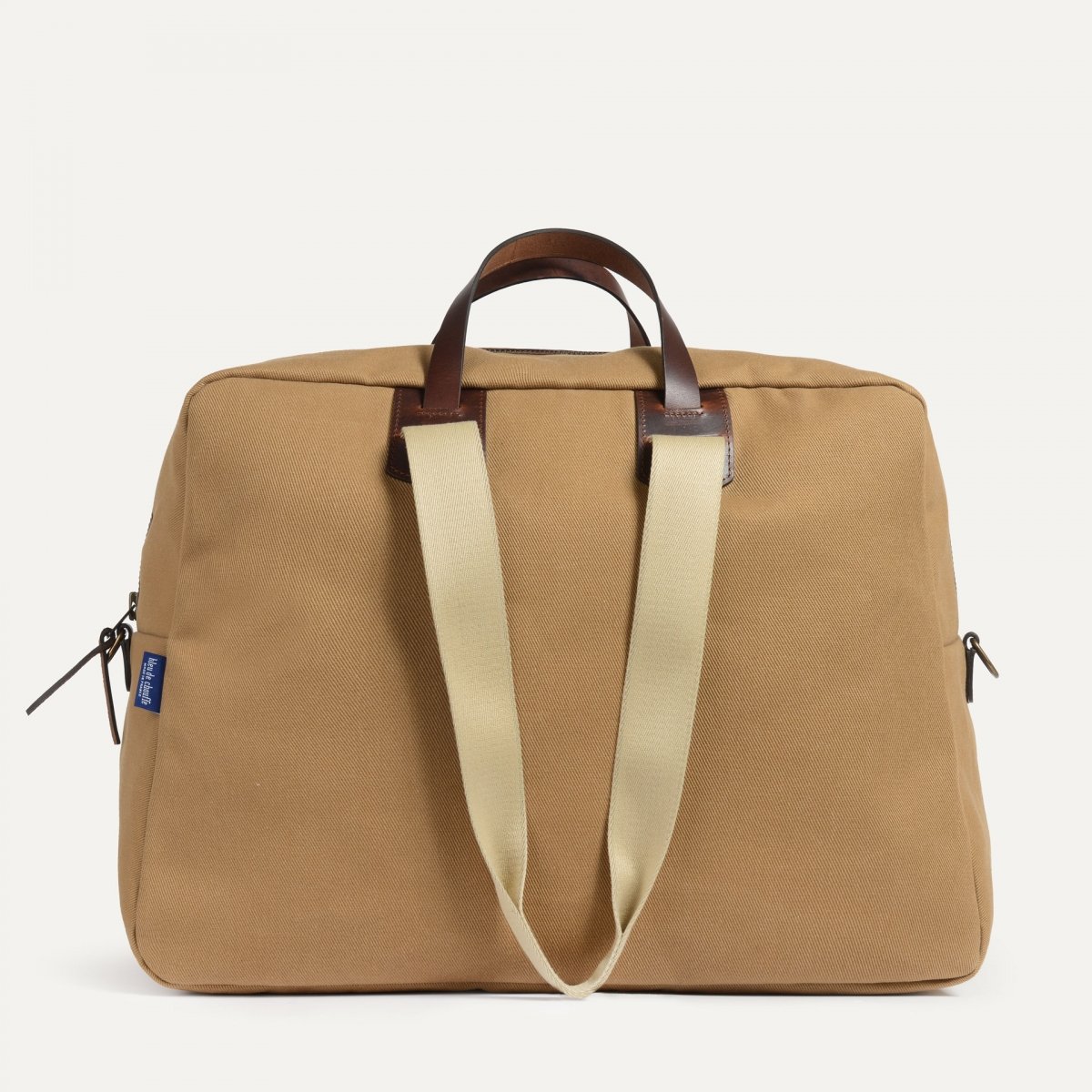The emergence of aviator bags dates back to the 20th century, during the early decades of military aviation.
In the 1920s and 1930s, pilots needed functional bags to carry their personal belongings and essential equipment. At the time, the specifications were complex because cockpits were cramped and unpressurized. A lightweight bag was required to avoid weighing down the small planes of the era, yet it had to be sturdy enough to withstand the elements (humidity, dust, overheating…) and easy to carry. This led to the adoption of a vertical-format bag with handles and a wide opening for quick access to its contents!
During World War II, the US Army Air Forces and the Royal Air Force improved this bag to adapt to long missions and airborne operations, adding dedicated compartments for first aid kits and military rations.
After the war, aviator bags were repurposed from military surplus and used in civilian life. Their practicality and durability appealed to travelers, adventurers, and vintage enthusiasts.
In 1963, Steve McQueen immortalized the aviator bag in The Great Escape. The aviator bag gained popularity and became both a Hollywood icon and an authentic element of the aviation world. Then, in the 2000s, the fashion industry reinterpreted the aviator bag in modernized versions.
Today, the aviator bag has become a symbol of adventure and freedom, blending historical heritage with contemporary fashion.































